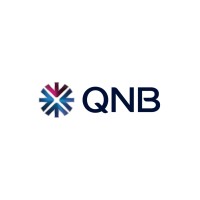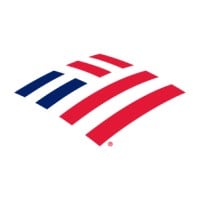Company Details
rbc
96,639
871,247
52211
rbc.com
0
RBC_1412822
In-progress

RBC Company CyberSecurity Posture
rbc.comRoyal Bank of Canada is a global financial institution with a purpose-driven, principles-led approach to delivering leading performance. Our success comes from the 94,000+ employees who leverage their imaginations and insights to bring our vision, values and strategy to life so we can help our clients thrive and communities prosper. As Canada's biggest bank and one of the largest in the world, based on market capitalization, we have a diversified business model with a focus on innovation and providing exceptional experiences to our more than 17 million clients in Canada, the U.S. and 27 other countries. Learn more at rbc.com. We are proud to support a broad range of community initiatives through donations, community investments and employee volunteer activities. See how at www.rbc.com/community-social-impact. http://rbc.com/legalstuff. La Banque Royale du Canada est une institution financière mondiale définie par sa raison d'être, guidée par des principes et orientée vers l'excellence en matière de rendement. Notre succès est attribuable aux quelque 94 000+ employés qui mettent à profit leur créativité et leur savoir faire pour concrétiser notre vision, nos valeurs et notre stratégie afin que nous puissions contribuer à la prospérité de nos clients et au dynamisme des collectivités. Selon la capitalisation boursière, nous sommes la plus importante banque du Canada et l'une des plus grandes banques du monde. Nous avons adopté un modèle d'affaires diversifié axé sur l'innovation et l'offre d'expériences exceptionnelles à nos plus de 17 millions de clients au Canada, aux États Unis et dans 27 autres pays. Pour en savoir plus, visitez le site rbc.com/francais Nous sommes fiers d'appuyer une grande diversité d'initiatives communautaires par des dons, des investissements dans la collectivité et le travail bénévole de nos employés. Pour de plus amples renseignements, visitez le site www.rbc.com/collectivite-impact-social. https://www.rbc.com/conditions-dutilisation/
Company Details
rbc
96,639
871,247
52211
rbc.com
0
RBC_1412822
In-progress
Between 800 and 849

 RBC Global Score (TPRM)
RBC Global Score (TPRM)XXXX

Description: A junior RBC employee, Ibrahim El-Hakim, exploited his legitimate access to breach client records, including those of then-Prime Minister Mark Carney. Recruited via Telegram by a contact linked to organized crime ('AI WORLD'), El-Hakim allegedly opened fraudulent accounts, trafficked client identification numbers, and participated in a $68,500 credit line fraud scheme. While RBC detected the breach and terminated the employee, the incident escalated into a national security concern due to the high-profile target. Surveillance logs captured El-Hakim’s actions—accessing accounts, creating credit lines, and viewing sensitive data—but RBC’s *partial monitoring* failed to prevent or immediately flag the misuse. The case highlights systemic gaps in *least-privilege access controls* and real-time oversight, compounded by the overlap between organized crime and potential state-sponsored threats. Charges include fraud, unauthorized computer use, and trafficking personal data for fraudulent purposes. The RCMP’s national security unit took over due to the prime minister’s involvement, though no direct physical threat was confirmed.


RBC has 12.36% more incidents than the average of same-industry companies with at least one recorded incident.
RBC has 56.25% more incidents than the average of all companies with at least one recorded incident.
RBC reported 1 incidents this year: 0 cyber attacks, 0 ransomware, 0 vulnerabilities, 1 data breaches, compared to industry peers with at least 1 incident.
RBC cyber incidents detection timeline including parent company and subsidiaries

Royal Bank of Canada is a global financial institution with a purpose-driven, principles-led approach to delivering leading performance. Our success comes from the 94,000+ employees who leverage their imaginations and insights to bring our vision, values and strategy to life so we can help our clients thrive and communities prosper. As Canada's biggest bank and one of the largest in the world, based on market capitalization, we have a diversified business model with a focus on innovation and providing exceptional experiences to our more than 17 million clients in Canada, the U.S. and 27 other countries. Learn more at rbc.com. We are proud to support a broad range of community initiatives through donations, community investments and employee volunteer activities. See how at www.rbc.com/community-social-impact. http://rbc.com/legalstuff. La Banque Royale du Canada est une institution financière mondiale définie par sa raison d'être, guidée par des principes et orientée vers l'excellence en matière de rendement. Notre succès est attribuable aux quelque 94 000+ employés qui mettent à profit leur créativité et leur savoir faire pour concrétiser notre vision, nos valeurs et notre stratégie afin que nous puissions contribuer à la prospérité de nos clients et au dynamisme des collectivités. Selon la capitalisation boursière, nous sommes la plus importante banque du Canada et l'une des plus grandes banques du monde. Nous avons adopté un modèle d'affaires diversifié axé sur l'innovation et l'offre d'expériences exceptionnelles à nos plus de 17 millions de clients au Canada, aux États Unis et dans 27 autres pays. Pour en savoir plus, visitez le site rbc.com/francais Nous sommes fiers d'appuyer une grande diversité d'initiatives communautaires par des dons, des investissements dans la collectivité et le travail bénévole de nos employés. Pour de plus amples renseignements, visitez le site www.rbc.com/collectivite-impact-social. https://www.rbc.com/conditions-dutilisation/


About Kotak Mahindra Group: Established in 1985, the Kotak Mahindra Group is one of India’s leading financial services conglomerates. In February 2003, Kotak Mahindra Finance Ltd. (KMFL), the Group’s flagship company, received a banking license from the Reserve Bank of India (RBI). With this, KMF

A major consumer credit provider in Europe, Crédit Agricole Consumer Finance operates in 19 countries. Its 9,900 employees support customers by providing the financing they need to undertake their projects. Reflecting the essential social and economic role of consumer credit, Crédit Agricole Consu
We are a universal bank with a 200-year history of supporting and growing the Nordic economies – enabling dreams and aspirations for a greater good. Every day, we work to support our customers’ financial development, delivering best-in-class omnichannel customer experiences and driving sustainable c

About Emirates NBD Emirates NBD (DFM: Emirates NBD) is a leading banking group in the MENAT (Middle East, North Africa and Türkiye) region with a presence in 13 countries, serving over 20 million customers. As at 30th September 2023, total assets were AED 836 billion, (equivalent to approx. USD 2

Finansbank A.Ş. 26 Ekim 1987 tarihinde iş insanı Hüsnü Özyeğin liderliğinde 100 ortakla Bankalar Kanunu ve Türk Ticaret Kanunu hükümleri uyarınca kuruldu. Sektörde hızlı büyeme ile ilk 5 büyük özel banka arasına giren QNB Finansbank, 2006 yılında Yunanistan'ın en büyük bankası National Bank of Greec

DBS is a leading financial services group in Asia with a presence in 19 markets. Headquartered and listed in Singapore, DBS is in the three key Asian axes of growth: Greater China, Southeast Asia and South Asia. The bank's "AA-" and "Aa1" credit ratings are among the highest in the world. Recognise

Bank of America is one of the world's largest financial institutions, serving individuals, small- and middle-market businesses and large corporations with a full range of banking, investing, asset management and other financial and risk management products and services. The company serves approximat

1954 yılında, vakıf kaynaklarını ekonomik kalkınmanın gereksinimleri doğrultusunda en iyi biçimde değerlendirmek amacıyla kurulan VakıfBank, o günden bu yana çağdaş bankacılık yöntemleri ve uygulamalarıyla Türkiye’nin tasarruf düzeyinin gelişim sürecine katkıda bulunmaktadır. VakıfBank; bölgesinin e

At BBVA we are leading the transformation of banking worldwide, united in pursuing our goal of bringing the age of opportunity to everyone. Firmly focused on the future, our on-going digital transformation is already producing disruptive innovations that power our vision of banking. Every one of o
.png)
The visionary gift will enable students to delve deeper into topics the tech industry is confronting today.
Learn how to safeguard your business against increasingly sophisticated cyber threats and take proactive steps to prevent data breaches and...
The Dutch government has allocated €10 million to Ukraine to strengthen the country's digital resilience and cyber defense.
The Netherlands is strengthening its support for Ukraine by allocating additional funds to bolster the country's digital security.
CNW/ - Today, Rogers Cybersecure Catalyst at Toronto Metropolitan University ("the Catalyst"), with support from RBC, launched its newest...
How to reduce your risk · Secure your home Wi-Fi with a strong password. Change those default passwords right away! · Check privacy settings on...
If fraudulent activity has been detected, it's important to contact the local authorities to report the incident, and your financial institution...
October is Cyber Security Awareness Month – the perfect time to look at how AI is reshaping the way we consume, share, and protect our...
The RCMP has charged an Ottawa RBC employee after he allegedly accessed Prime Minister Mark Carney's banking profile as part of a criminal...

Explore insights on cybersecurity incidents, risk posture, and Rankiteo's assessments.
The official website of RBC is http://www.rbc.com.
According to Rankiteo, RBC’s AI-generated cybersecurity score is 804, reflecting their Good security posture.
According to Rankiteo, RBC currently holds 0 security badges, indicating that no recognized compliance certifications are currently verified for the organization.
According to Rankiteo, RBC is not certified under SOC 2 Type 1.
According to Rankiteo, RBC does not hold a SOC 2 Type 2 certification.
According to Rankiteo, RBC is not listed as GDPR compliant.
According to Rankiteo, RBC does not currently maintain PCI DSS compliance.
According to Rankiteo, RBC is not compliant with HIPAA regulations.
According to Rankiteo,RBC is not certified under ISO 27001, indicating the absence of a formally recognized information security management framework.
RBC operates primarily in the Banking industry.
RBC employs approximately 96,639 people worldwide.
RBC presently has no subsidiaries across any sectors.
RBC’s official LinkedIn profile has approximately 871,247 followers.
RBC is classified under the NAICS code 52211, which corresponds to Commercial Banking.
Yes, RBC has an official profile on Crunchbase, which can be accessed here: https://www.crunchbase.com/organization/royal-bank-of-canada-fb33.
Yes, RBC maintains an official LinkedIn profile, which is actively utilized for branding and talent engagement, which can be accessed here: https://www.linkedin.com/company/rbc.
As of November 27, 2025, Rankiteo reports that RBC has experienced 1 cybersecurity incidents.
RBC has an estimated 6,713 peer or competitor companies worldwide.
Incident Types: The types of cybersecurity incidents that have occurred include Breach.
Total Financial Loss: The total financial loss from these incidents is estimated to be $0.
Detection and Response: The company detects and responds to cybersecurity incidents through an third party assistance with law enforcement (rcmp integrated national security enforcement team), and and containment measures with employee termination, containment measures with account access revocation, and communication strategy with limited public disclosure, communication strategy with media statements, and enhanced monitoring with review of access controls (planned)..
Title: Insider Threat at Royal Bank of Canada (RBC) Involving Prime Minister's Data
Description: Ibrahim El-Hakim, a 23-year-old junior employee at the Royal Bank of Canada (RBC) in Ottawa, allegedly used his legitimate work credentials to access client records, including those of then-Prime Minister Mark Carney. He was recruited via Telegram by a contact named 'AI WORLD,' suspected of ties to organized crime, and instructed to open fraudulent accounts and exfiltrate sensitive information. The breach escalated into a national security concern due to the involvement of high-profile data. RBC detected the breach, terminated El-Hakim, and cooperated with law enforcement. The case highlights systemic vulnerabilities in insider threat detection, access controls, and real-time monitoring within financial institutions.
Date Publicly Disclosed: 2024-06
Type: Insider Threat
Attack Vector: Legitimate Credential AbuseSocial Engineering (Recruitment via Telegram)Insider Access Misuse
Vulnerability Exploited: Excessive Access PrivilegesInsufficient Real-Time MonitoringPartial Logging of Data AccessLack of Behavioral Anomaly Detection
Threat Actor: Primary: {'name': 'Ibrahim El-Hakim', 'role': 'RBC Junior Employee (Insider)', 'affiliation': None, 'motivation': ['Financial Gain', 'Coercion by External Actor']}Secondary: {'alias': 'AI WORLD', 'affiliation': ['Suspected Organized Crime', 'Possible State-Actor Ties'], 'role': 'Recruiter/Handler', 'communication_channel': 'Telegram (Encrypted)'}
Motivation: Financial FraudData Theft for ResalePotential Espionage (National Security Risk)
Common Attack Types: The most common types of attacks the company has faced is Breach.
Identification of Attack Vectors: The company identifies the attack vectors used in incidents through Legitimate Employee Credentials (No Malware or Phishing).

Systems Affected: Client Account Management SystemCredit Line Approval System
Operational Impact: Internal InvestigationEmployee TerminationLaw Enforcement CoordinationReputation Damage
Brand Reputation Impact: High (National Media Coverage)Erosion of Trust in Financial Security
Legal Liabilities: Criminal Charges Against EmployeePotential Regulatory Scrutiny
Identity Theft Risk: ['High (PII of Prime Minister and Other Clients Exposed)']
Payment Information Risk: ['High (Fraudulent Accounts Opened)']
Average Financial Loss: The average financial loss per incident is $0.00.
Commonly Compromised Data Types: The types of data most commonly compromised in incidents are Personally Identifiable Information (Pii), Client Identification Numbers, Financial Records, Credit Line Details and .

Entity Name: Royal Bank of Canada (RBC)
Entity Type: Financial Institution
Industry: Banking
Location: Canada (Headquarters: Toronto, Incident: Ottawa Branch)
Size: Large (Over 80,000 Employees)
Customers Affected: Prime Minister Mark Carney, Undisclosed Number of Clients

Entity Name: Government of Canada
Entity Type: Government
Industry: Public Sector
Location: Canada

Incident Response Plan Activated: True
Third Party Assistance: Law Enforcement (Rcmp Integrated National Security Enforcement Team).
Containment Measures: Employee TerminationAccount Access Revocation
Communication Strategy: Limited Public DisclosureMedia Statements
Enhanced Monitoring: Review of Access Controls (Planned)
Third-Party Assistance: The company involves third-party assistance in incident response through Law Enforcement (RCMP Integrated National Security Enforcement Team), .

Type of Data Compromised: Personally identifiable information (pii), Client identification numbers, Financial records, Credit line details
Sensitivity of Data: High (Includes Data of Prime Minister and Financial Records)
Personally Identifiable Information: NamesAccount NumbersIdentification NumbersAddress/Contact Details
Handling of PII Incidents: The company handles incidents involving personally identifiable information (PII) through by employee termination, account access revocation and .

Regulations Violated: Potential Violations of Canadian Privacy Laws (PIPEDA), OSFI Cybersecurity Standards,
Legal Actions: Criminal Charges Against Ibrahim El-Hakim (Fraud, Unauthorized Computer Use, Trafficking in Identification Information),
Regulatory Notifications: Office of the Superintendent of Financial Institutions (OSFI) Likely Notified
Ensuring Regulatory Compliance: The company ensures compliance with regulatory requirements through Criminal Charges Against Ibrahim El-Hakim (Fraud, Unauthorized Computer Use, Trafficking in Identification Information), .

Lessons Learned: Insider threats are among the hardest breaches to detect and require proactive mitigation strategies., Principle of 'least privilege' must be strictly enforced, especially for roles with access to high-profile or sensitive data., Real-time monitoring and behavioral analytics are critical to detect anomalous access patterns, even with legitimate credentials., Logging systems must capture not just access metadata (e.g., timestamps) but also the specific data viewed or modified., Third-party communication platforms (e.g., Telegram) can be exploited for recruiting insiders and must be monitored where feasible., National security risks can emerge from consumer-facing institutions, necessitating cross-sector collaboration between private entities and law enforcement.

Recommendations: Implement **strict access controls** based on job roles and the principle of least privilege, with additional safeguards for high-profile accounts (e.g., multi-person approval for sensitive data access)., Enhance **real-time monitoring** with behavioral analytics to flag unusual activities (e.g., accessing unrelated client accounts, creating fraudulent credit lines)., Expand **logging capabilities** to record the actual data viewed or modified during access sessions, not just metadata., Conduct **regular audits** of access logs and privileges, particularly for employees in sensitive roles., Strengthen **insider threat programs** with training to recognize coercion or recruitment attempts (e.g., via encrypted apps)., Foster a **culture of accountability** where employees are encouraged to report suspicious behavior without fear of retaliation., Collaborate with **regulators and law enforcement** to share threat intelligence on emerging insider threat tactics, especially those blending organized crime and state-sponsored activities., Assess **third-party application risks**, including unauthorized use of encrypted messaging platforms for work-related communications.Implement **strict access controls** based on job roles and the principle of least privilege, with additional safeguards for high-profile accounts (e.g., multi-person approval for sensitive data access)., Enhance **real-time monitoring** with behavioral analytics to flag unusual activities (e.g., accessing unrelated client accounts, creating fraudulent credit lines)., Expand **logging capabilities** to record the actual data viewed or modified during access sessions, not just metadata., Conduct **regular audits** of access logs and privileges, particularly for employees in sensitive roles., Strengthen **insider threat programs** with training to recognize coercion or recruitment attempts (e.g., via encrypted apps)., Foster a **culture of accountability** where employees are encouraged to report suspicious behavior without fear of retaliation., Collaborate with **regulators and law enforcement** to share threat intelligence on emerging insider threat tactics, especially those blending organized crime and state-sponsored activities., Assess **third-party application risks**, including unauthorized use of encrypted messaging platforms for work-related communications.Implement **strict access controls** based on job roles and the principle of least privilege, with additional safeguards for high-profile accounts (e.g., multi-person approval for sensitive data access)., Enhance **real-time monitoring** with behavioral analytics to flag unusual activities (e.g., accessing unrelated client accounts, creating fraudulent credit lines)., Expand **logging capabilities** to record the actual data viewed or modified during access sessions, not just metadata., Conduct **regular audits** of access logs and privileges, particularly for employees in sensitive roles., Strengthen **insider threat programs** with training to recognize coercion or recruitment attempts (e.g., via encrypted apps)., Foster a **culture of accountability** where employees are encouraged to report suspicious behavior without fear of retaliation., Collaborate with **regulators and law enforcement** to share threat intelligence on emerging insider threat tactics, especially those blending organized crime and state-sponsored activities., Assess **third-party application risks**, including unauthorized use of encrypted messaging platforms for work-related communications.Implement **strict access controls** based on job roles and the principle of least privilege, with additional safeguards for high-profile accounts (e.g., multi-person approval for sensitive data access)., Enhance **real-time monitoring** with behavioral analytics to flag unusual activities (e.g., accessing unrelated client accounts, creating fraudulent credit lines)., Expand **logging capabilities** to record the actual data viewed or modified during access sessions, not just metadata., Conduct **regular audits** of access logs and privileges, particularly for employees in sensitive roles., Strengthen **insider threat programs** with training to recognize coercion or recruitment attempts (e.g., via encrypted apps)., Foster a **culture of accountability** where employees are encouraged to report suspicious behavior without fear of retaliation., Collaborate with **regulators and law enforcement** to share threat intelligence on emerging insider threat tactics, especially those blending organized crime and state-sponsored activities., Assess **third-party application risks**, including unauthorized use of encrypted messaging platforms for work-related communications.Implement **strict access controls** based on job roles and the principle of least privilege, with additional safeguards for high-profile accounts (e.g., multi-person approval for sensitive data access)., Enhance **real-time monitoring** with behavioral analytics to flag unusual activities (e.g., accessing unrelated client accounts, creating fraudulent credit lines)., Expand **logging capabilities** to record the actual data viewed or modified during access sessions, not just metadata., Conduct **regular audits** of access logs and privileges, particularly for employees in sensitive roles., Strengthen **insider threat programs** with training to recognize coercion or recruitment attempts (e.g., via encrypted apps)., Foster a **culture of accountability** where employees are encouraged to report suspicious behavior without fear of retaliation., Collaborate with **regulators and law enforcement** to share threat intelligence on emerging insider threat tactics, especially those blending organized crime and state-sponsored activities., Assess **third-party application risks**, including unauthorized use of encrypted messaging platforms for work-related communications.Implement **strict access controls** based on job roles and the principle of least privilege, with additional safeguards for high-profile accounts (e.g., multi-person approval for sensitive data access)., Enhance **real-time monitoring** with behavioral analytics to flag unusual activities (e.g., accessing unrelated client accounts, creating fraudulent credit lines)., Expand **logging capabilities** to record the actual data viewed or modified during access sessions, not just metadata., Conduct **regular audits** of access logs and privileges, particularly for employees in sensitive roles., Strengthen **insider threat programs** with training to recognize coercion or recruitment attempts (e.g., via encrypted apps)., Foster a **culture of accountability** where employees are encouraged to report suspicious behavior without fear of retaliation., Collaborate with **regulators and law enforcement** to share threat intelligence on emerging insider threat tactics, especially those blending organized crime and state-sponsored activities., Assess **third-party application risks**, including unauthorized use of encrypted messaging platforms for work-related communications.Implement **strict access controls** based on job roles and the principle of least privilege, with additional safeguards for high-profile accounts (e.g., multi-person approval for sensitive data access)., Enhance **real-time monitoring** with behavioral analytics to flag unusual activities (e.g., accessing unrelated client accounts, creating fraudulent credit lines)., Expand **logging capabilities** to record the actual data viewed or modified during access sessions, not just metadata., Conduct **regular audits** of access logs and privileges, particularly for employees in sensitive roles., Strengthen **insider threat programs** with training to recognize coercion or recruitment attempts (e.g., via encrypted apps)., Foster a **culture of accountability** where employees are encouraged to report suspicious behavior without fear of retaliation., Collaborate with **regulators and law enforcement** to share threat intelligence on emerging insider threat tactics, especially those blending organized crime and state-sponsored activities., Assess **third-party application risks**, including unauthorized use of encrypted messaging platforms for work-related communications.Implement **strict access controls** based on job roles and the principle of least privilege, with additional safeguards for high-profile accounts (e.g., multi-person approval for sensitive data access)., Enhance **real-time monitoring** with behavioral analytics to flag unusual activities (e.g., accessing unrelated client accounts, creating fraudulent credit lines)., Expand **logging capabilities** to record the actual data viewed or modified during access sessions, not just metadata., Conduct **regular audits** of access logs and privileges, particularly for employees in sensitive roles., Strengthen **insider threat programs** with training to recognize coercion or recruitment attempts (e.g., via encrypted apps)., Foster a **culture of accountability** where employees are encouraged to report suspicious behavior without fear of retaliation., Collaborate with **regulators and law enforcement** to share threat intelligence on emerging insider threat tactics, especially those blending organized crime and state-sponsored activities., Assess **third-party application risks**, including unauthorized use of encrypted messaging platforms for work-related communications.
Key Lessons Learned: The key lessons learned from past incidents are Insider threats are among the hardest breaches to detect and require proactive mitigation strategies.,Principle of 'least privilege' must be strictly enforced, especially for roles with access to high-profile or sensitive data.,Real-time monitoring and behavioral analytics are critical to detect anomalous access patterns, even with legitimate credentials.,Logging systems must capture not just access metadata (e.g., timestamps) but also the specific data viewed or modified.,Third-party communication platforms (e.g., Telegram) can be exploited for recruiting insiders and must be monitored where feasible.,National security risks can emerge from consumer-facing institutions, necessitating cross-sector collaboration between private entities and law enforcement.

Source: National Post

Source: RCMP Affidavit (Montreal Courthouse, June 2024)

Source: Interviews with Benjamin Fung (McGill University), Paige Backman (Privacy Lawyer), Neil Desai (CIGI)
Additional Resources: Stakeholders can find additional resources on cybersecurity best practices at and Source: National Post, and Source: RCMP Affidavit (Montreal Courthouse, June 2024), and Source: Interviews with Benjamin Fung (McGill University), Paige Backman (Privacy Lawyer), Neil Desai (CIGI).

Investigation Status: Ongoing (Next court date: 2024-11-05)
Communication of Investigation Status: The company communicates the status of incident investigations to stakeholders through Limited Public Disclosure and Media Statements.

Stakeholder Advisories: Limited Disclosure To Affected High-Profile Individuals (E.G., Prime Minister'S Office).
Advisories Provided: The company provides the following advisories to stakeholders and customers following an incident: were Limited Disclosure To Affected High-Profile Individuals (E.G. and Prime Minister'S Office).

Entry Point: Legitimate Employee Credentials (No Malware or Phishing)
High Value Targets: Prime Minister Mark Carney'S Account, Other High-Net-Worth Clients,
Data Sold on Dark Web: Prime Minister Mark Carney'S Account, Other High-Net-Worth Clients,

Root Causes: Overprivileged Access For Junior Employee With No Business Need To Access High-Profile Accounts., Inadequate Real-Time Monitoring To Detect Anomalous Behavior (E.G., Creating Fraudulent Accounts)., Partial Logging That Failed To Capture The Specific Data Accessed Or Exfiltrated., Lack Of Behavioral Safeguards To Prevent Insider Recruitment Via Encrypted Channels., Cultural Or Procedural Gaps In Enforcing The Principle Of Least Privilege.,
Corrective Actions: Rbc Likely Reviewing Access Controls And Monitoring Systems (Details Undisclosed)., Potential Regulatory Recommendations From Osfi Pending Investigation Outcomes., Broader Industry Discussions On Insider Threat Mitigation In Financial Sectors.,
Post-Incident Analysis Process: The company's process for conducting post-incident analysis is described as Law Enforcement (Rcmp Integrated National Security Enforcement Team), , Review Of Access Controls (Planned), .
Corrective Actions Taken: The company has taken the following corrective actions based on post-incident analysis: Rbc Likely Reviewing Access Controls And Monitoring Systems (Details Undisclosed)., Potential Regulatory Recommendations From Osfi Pending Investigation Outcomes., Broader Industry Discussions On Insider Threat Mitigation In Financial Sectors., .
Last Attacking Group: The attacking group in the last incident were an Primary: {'name': 'Ibrahim El-Hakim', 'role': 'RBC Junior Employee (Insider)', 'affiliation': None, 'motivation': ['Financial Gain', 'Coercion by External Actor']}Secondary: {'alias': 'AI WORLD', 'affiliation': ['Suspected Organized Crime', 'Possible State-Actor Ties'], 'role': 'Recruiter/Handler' and 'communication_channel': 'Telegram (Encrypted)'}.
Most Recent Incident Publicly Disclosed: The most recent incident publicly disclosed was on 2024-06.
Highest Financial Loss: The highest financial loss from an incident was {'fraudulent_credit_line': 'CAD 68,500', 'total_estimated': None}.
Most Significant System Affected: The most significant system affected in an incident was Client Account Management SystemCredit Line Approval System.
Third-Party Assistance in Most Recent Incident: The third-party assistance involved in the most recent incident was law enforcement (rcmp integrated national security enforcement team), .
Containment Measures in Most Recent Incident: The containment measures taken in the most recent incident was Employee TerminationAccount Access Revocation.
Most Significant Legal Action: The most significant legal action taken for a regulatory violation was Criminal Charges Against Ibrahim El-Hakim (Fraud, Unauthorized Computer Use, Trafficking in Identification Information), .
Most Significant Lesson Learned: The most significant lesson learned from past incidents was National security risks can emerge from consumer-facing institutions, necessitating cross-sector collaboration between private entities and law enforcement.
Most Significant Recommendation Implemented: The most significant recommendation implemented to improve cybersecurity was Foster a **culture of accountability** where employees are encouraged to report suspicious behavior without fear of retaliation., Conduct **regular audits** of access logs and privileges, particularly for employees in sensitive roles., Expand **logging capabilities** to record the actual data viewed or modified during access sessions, not just metadata., Implement **strict access controls** based on job roles and the principle of least privilege, with additional safeguards for high-profile accounts (e.g., multi-person approval for sensitive data access)., Collaborate with **regulators and law enforcement** to share threat intelligence on emerging insider threat tactics, especially those blending organized crime and state-sponsored activities., Assess **third-party application risks**, including unauthorized use of encrypted messaging platforms for work-related communications., Enhance **real-time monitoring** with behavioral analytics to flag unusual activities (e.g., accessing unrelated client accounts, creating fraudulent credit lines)., Strengthen **insider threat programs** with training to recognize coercion or recruitment attempts (e.g. and via encrypted apps)..
Most Recent Source: The most recent source of information about an incident are National Post, RCMP Affidavit (Montreal Courthouse, June 2024), Interviews with Benjamin Fung (McGill University), Paige Backman (Privacy Lawyer) and Neil Desai (CIGI).
Current Status of Most Recent Investigation: The current status of the most recent investigation is Ongoing (Next court date: 2024-11-05).
Most Recent Stakeholder Advisory: The most recent stakeholder advisory issued was Limited disclosure to affected high-profile individuals (e.g., Prime Minister's office), .
Most Recent Entry Point: The most recent entry point used by an initial access broker was an Legitimate Employee Credentials (No Malware or Phishing).
.png)
Angular is a development platform for building mobile and desktop web applications using TypeScript/JavaScript and other languages. Prior to versions 19.2.16, 20.3.14, and 21.0.1, there is a XSRF token leakage via protocol-relative URLs in angular HTTP clients. The vulnerability is a Credential Leak by App Logic that leads to the unauthorized disclosure of the Cross-Site Request Forgery (XSRF) token to an attacker-controlled domain. Angular's HttpClient has a built-in XSRF protection mechanism that works by checking if a request URL starts with a protocol (http:// or https://) to determine if it is cross-origin. If the URL starts with protocol-relative URL (//), it is incorrectly treated as a same-origin request, and the XSRF token is automatically added to the X-XSRF-TOKEN header. This issue has been patched in versions 19.2.16, 20.3.14, and 21.0.1. A workaround for this issue involves avoiding using protocol-relative URLs (URLs starting with //) in HttpClient requests. All backend communication URLs should be hardcoded as relative paths (starting with a single /) or fully qualified, trusted absolute URLs.
Forge (also called `node-forge`) is a native implementation of Transport Layer Security in JavaScript. An Uncontrolled Recursion vulnerability in node-forge versions 1.3.1 and below enables remote, unauthenticated attackers to craft deep ASN.1 structures that trigger unbounded recursive parsing. This leads to a Denial-of-Service (DoS) via stack exhaustion when parsing untrusted DER inputs. This issue has been patched in version 1.3.2.
Forge (also called `node-forge`) is a native implementation of Transport Layer Security in JavaScript. An Integer Overflow vulnerability in node-forge versions 1.3.1 and below enables remote, unauthenticated attackers to craft ASN.1 structures containing OIDs with oversized arcs. These arcs may be decoded as smaller, trusted OIDs due to 32-bit bitwise truncation, enabling the bypass of downstream OID-based security decisions. This issue has been patched in version 1.3.2.
Suricata is a network IDS, IPS and NSM engine developed by the OISF (Open Information Security Foundation) and the Suricata community. Prior to versions 7.0.13 and 8.0.2, working with large buffers in Lua scripts can lead to a stack overflow. Users of Lua rules and output scripts may be affected when working with large buffers. This includes a rule passing a large buffer to a Lua script. This issue has been patched in versions 7.0.13 and 8.0.2. A workaround for this issue involves disabling Lua rules and output scripts, or making sure limits, such as stream.depth.reassembly and HTTP response body limits (response-body-limit), are set to less than half the stack size.
Suricata is a network IDS, IPS and NSM engine developed by the OISF (Open Information Security Foundation) and the Suricata community. In versions from 8.0.0 to before 8.0.2, a NULL dereference can occur when the entropy keyword is used in conjunction with base64_data. This issue has been patched in version 8.0.2. A workaround involves disabling rules that use entropy in conjunction with base64_data.

Get company history
















Every week, Rankiteo analyzes billions of signals to give organizations a sharper, faster view of emerging risks. With deeper, more actionable intelligence at their fingertips, security teams can outpace threat actors, respond instantly to Zero-Day attacks, and dramatically shrink their risk exposure window.
Identify exposed access points, detect misconfigured SSL certificates, and uncover vulnerabilities across the network infrastructure.
Gain visibility into the software components used within an organization to detect vulnerabilities, manage risk, and ensure supply chain security.
Monitor and manage all IT assets and their configurations to ensure accurate, real-time visibility across the company's technology environment.
Leverage real-time insights on active threats, malware campaigns, and emerging vulnerabilities to proactively defend against evolving cyberattacks.




